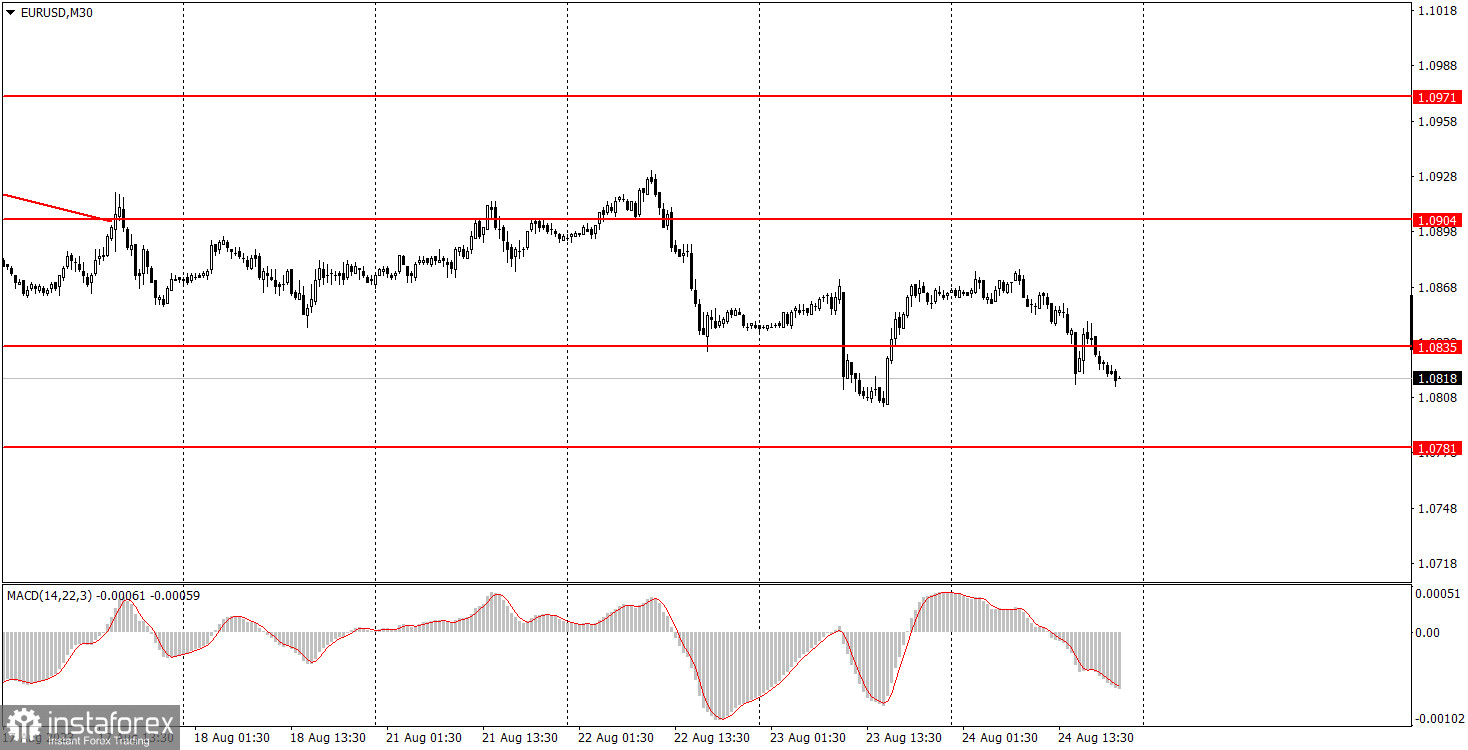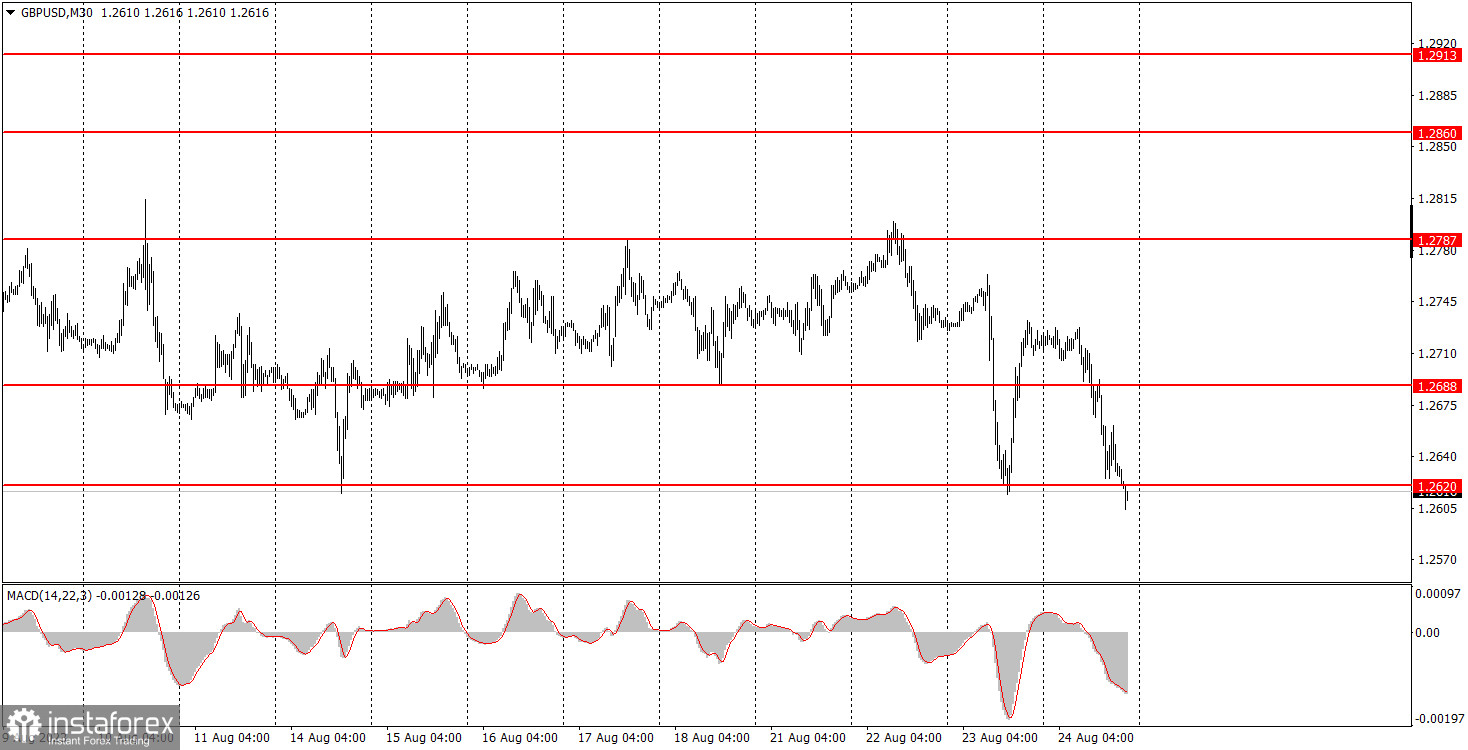Overview of macroeconomic reports

Overview of macroeconomic reports
Few economic reports are scheduled for release on Friday, and none of them are important. Germany will release the final assessment of its GDP report. It's expected that the figure will remain unchanged, which won't surprise anyone or prompt a market reaction, as everyone has long been accustomed to the European economy teetering on the brink of recession, but not yet falling into it. Unless we see a significant deviation from the initial value, we don't expect a reaction at all. The US will publish the University of Michigan's Consumer Sentiment Index. The same thing applies here - unless there is a significant deviation from the forecast (71.2), expecting a market reaction would be pointless. On the other hand, there are important fundamental events that we can look forward to.
Overview of fundamental events
Among today's fundamental events, investors will be expecting to listen to speeches of Federal Reserve Chairman Jerome Powell and European Central Bank Christine Lagarde at the Jackson Hole symposium. Lagarde will try to let the market know whether the ECB intends to pause its rate hiking cycle in September. If the answer is affirmative, the euro may fall even lower. The same goes for Powell. In September, the Fed is unlikely to raise the rate, at least that's what the market currently expects. But if Powell allows for another rate hike, then the dollar might start a new uptrend. Both speeches are scheduled for the second half of the day.
Bottom line
On Friday, beginners will focus on Powell and Lagarde's speeches. If there are no surprises, the euro will continue to fall, and the pound may resume its downward movement after several weeks of consolidation. But for this to happen, the trading instrument should hold below the 1.2620 mark.
Main rules of the trading system:
- The strength of the signal is calculated by the time it took to form the signal (bounce/drop or overcoming the level). The less time it took, the stronger the signal.
- If two or more trades were opened near a certain level due to false signals, all subsequent signals from this level should be ignored.
- In a flat market, any currency pair can generate a lot of false signals or not generate them at all. But in any case, as soon as the first signs of a flat market are detected, it is better to stop trading.
- Trades are opened in the time interval between the beginning of the European session and the middle of the American one when all trades must be closed manually.
- On the 30-minute timeframe, you can trade based on MACD signals only on the condition of good volatility and provided that a trend is confirmed by the trend line or a trend channel.
- If two levels are located too close to each other (from 5 to 15 points), they should be considered as an area of support or resistance.
Comments on charts
Support and resistance levels are levels that serve as targets when opening long or short positions. Take Profit orders can be placed around them.
Red lines are channels or trend lines that display the current trend and show which direction is preferable for trading now.
The MACD (14,22,3) indicator, both histogram and signal line, is an auxiliary indicator that can also be used as a source of signals.
Important speeches and reports (always found in the news calendar) can significantly influence the movement of a currency pair. Therefore, during their release, it is recommended to trade with utmost caution or to exit the market to avoid a sharp price reversal against the previous movement.
Beginners trading in the forex market should remember that not every trade can be profitable. Developing a clear strategy and money management is the key to success in trading over a long period of time.
 English
English 
 Русский
Русский Bahasa Indonesia
Bahasa Indonesia Bahasa Malay
Bahasa Malay ไทย
ไทย Español
Español Deutsch
Deutsch Български
Български Français
Français Tiếng Việt
Tiếng Việt 中文
中文 বাংলা
বাংলা हिन्दी
हिन्दी Čeština
Čeština Українська
Українська Română
Română


